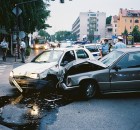The immediate aftermath of a car accident can be fraught with nerves and high-running emotions. With your adrenaline pumping and hundreds of thoughts going through your head, the last thing you’ll likely be concerned with is remembering an outline of steps to follow.
However, although it may be difficult, self-awareness and discipline are key. Knowing how to navigate the moments immediately after your crash, as well as the days and weeks that follow, will save you significant stress in the long run. That’s because, if you handled the situation properly, you’ll maintain your right to hire an NYC law firm and file a personal injury claim against the party who caused the crash in the first place.
So, at this point, you’re likely asking yourself, “So what do I need to do?” Follow the tips outlined in the guide below to ensure the most success.
Immediately After the Accident
The very first thing you should do upon impact with another vehicle is to stop your car and check yourself and your passengers. You’ll want to evaluate yourself for any injuries, internal pain, dizziness, compromised sense, or confusion. After checking all parties to ensure everyone is okay, check the flow of traffic and exit your vehicle once it’s safe. Approach the other driver’s car and ask them if they’re alright. If they are, notify them that you’re going to call 911 and request a police officer.
When you’re on the phone with the 911 operator, explain what happened and let them know you need a police officer to come and take a report of the accident. If anyone has been hurt, notify the operator so they can send an ambulance to the scene, as well. Let the operator know where exactly your vehicle is located and where the crash occurred so the officer and medical personnel can get there as quickly as possible.
While you’re waiting for the officer and ambulance (if applicable) to arrive, begin taking pictures of the scene. Document the vehicle and your surroundings, as well as the other driver’s car. You should also take pictures of any traffic or street signs or markings, and take note if you spot any cameras nearby. If you do, you’ll likely want to follow up with the owner later on, as they might have caught the accident on film, which could be invaluable during the legal proceedings later on.
When the police officer arrives, give a clear and concise statement explaining what you believe happened. Avoid any statements that could be inferred as taking responsibility for the crash, as they will inevitably be included in the police report.
Once the officer finishes taking down everyone’s information, ask when you can receive a copy of the report. You’ll need this document to help support your personal injury claim later on.
In the Days Following the Crash
As soon as possible, schedule an appointment with your doctor for a medical examination. Have them put together a report of their findings and provide you with a copy. This will be another key piece of evidence in your personal injury claim.
Then, focus on finding a personal injury attorney to represent you in the upcoming proceedings. Once you’ve hired a lawyer, instruct any person who contacts you regarding the accident (such as the other driver’s insurance company) to get in touch with your lawyer.
Not only will this alleviate the stress associated with communicating with these parties, but it will also help prevent any potential slip-ups that could impact your innocence in the case.
